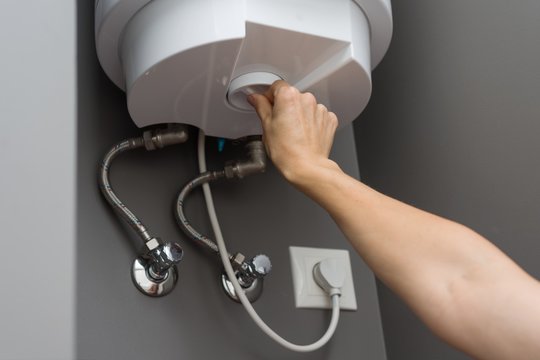This post down below pertaining to Water Heater Maintenance Tips You Can't Afford to Forget is rather informative. Don't miss it.

Warm water is important for day-to-day convenience, whether it's for a rejuvenating shower or washing recipes. To ensure your hot water system runs successfully and lasts longer, regular maintenance is key. This article gives functional tips and understandings on how to maintain your home's hot water system to prevent interruptions and costly repair services.
Introduction
Maintaining your home's warm water system could appear difficult, but with a couple of basic steps, you can guarantee it operates smoothly for several years ahead. This guide covers everything from understanding your hot water system to do it yourself upkeep suggestions and recognizing when to contact expert aid.
Significance of Preserving Your Warm Water System
Regular upkeep not just expands the life expectancy of your warm water system yet additionally guarantees it runs effectively. Neglecting maintenance can bring about reduced effectiveness, higher power bills, and even early failure of the system.
Indicators Your Warm Water System Needs Upkeep
Understanding when your hot water system requires focus can prevent significant concerns. Look out for indicators such as inconsistent water temperature level, weird noises from the heater, or corroded water.
Recognizing Your Hot Water System
Before diving right into maintenance tasks, it's helpful to comprehend the basic parts of your warm water system. Normally, this consists of the hot water heater itself, pipelines, anode rods, and temperature level controls.
Monthly Maintenance Tasks
Normal monthly checks can aid catch small concerns prior to they rise.
Purging the Water Heater
Purging your hot water heater eliminates debris accumulation, improving performance and extending its life.
Checking and Replacing Anode Rods
Anode poles prevent rust inside the tank. Checking and replacing them when worn is vital.
Checking and Readjusting Temperature Setups
Adjusting the temperature level setups makes certain optimal efficiency and safety and security.
Do It Yourself Tips for Maintenance
You can carry out several maintenance tasks on your own to maintain your warm water system in leading condition.
Checking for Leakages
Frequently check pipes and connections for leakages, as these can lead to water damage and greater expenses.
Examining Pressure Relief Valves
Testing the stress safety valve guarantees it operates appropriately and protects against extreme stress accumulation.
Insulating Pipes
Protecting hot water pipes lowers heat loss and can conserve power.
When to Call an Expert
While do it yourself maintenance is useful, some issues require professional competence.
Facility Issues Requiring Professional Aid
Instances consist of major leakages, electric issues, or if your water heater is continually underperforming.
Routine Expert Maintenance Advantages
Professional upkeep can include thorough assessments, tune-ups, and ensuring conformity with safety requirements.
Final thought
Regular upkeep of your home's hot water system is necessary for performance, durability, and expense savings. By adhering to these ideas and knowing when to seek specialist assistance, you can make certain a trusted supply of hot water without unforeseen disruptions.
Water Heater Maintenance Tips
Test the TPR Valve
- Shut off the power and the cold-water supply valve.
- Place a bucket under the pipe connected to the temperature-pressure-release (TPR) valve on the top or side of the tank. (This valve opens if the tank pressure gets too high.)
- Lift the valve’s tab to let some water out, then let go. If water keeps flowing, drain the tank partway, unscrew the old valve with a pipe wrench, and install a new one.
Check the Anode Rod
- Put a hose to the tank’s drain cock and let out a few gallons of water.
- Now fit a 1 1/16-inch socket onto the rod’s hex head on top of the heater (or under its top plate) and unscrew the rod. If it’s less than ½ inch thick or coated with calcium, buy a new one, wrap its threads with Teflon tape, put it back in the tank, and tighten securely. Use this segmented rod if headroom above the tank is limited.
Drain the Tank and Wash Out Sediment
- Drain the remaining water in the tank into the bucket, then stir up the sediment on the tank’s bottom by briefly opening the cold-water supply valve. Drain and repeat until clean water comes out of the hose.
- Close the drain cock, refill the tank, and turn its power back on.
Adjust the Temperature
- Find the temperature dial on the side of the tank and unscrew its cover. Adjust the dial to 120 degrees using a flathead screwdriver. For every 10 degrees the temperature is lowered, you can expect to save up to 5 percent in energy costs.
- Turn the water heater off or the thermostat down to its lowest setting if you plan to be away from home for more than three days.
Insulate the Pipes
- Buy some self-sticking 3/8-inch-thick foam pipe insulation that matches the pipes’ diameter.
- Slide the foam over the hot-and cold-water pipes as far as you can reach. Insulating the cold-water pipe prevents condensation in summer.
- Peel the tape and squeeze the insulation closed. If the pipe is 6 inches or less from the flue, cover it with 1-inch-thick unfaced fiberglass pipe wrap.
https://www.thisoldhouse.com/plumbing/21016402/how-to-maintain-a-water-heater

I'm just very fascinated with How to Maintain Your Water Heater & Prolong its Life and I really hope you appreciated our blog posting. Loved our blog? Please share it. Let somebody else find it. I treasure reading our article about Tips on Maintaining a Water Heater.
Customer Reviews
Comments on “Expert Tips on Maintaining Your Home's Hot Water SystemMaintaining Your Home's Hot Water System: Important GuidelinesKey Maintenance Techniques for Your Home's Hot Water System”